Meet CARMEN, short for Cognitively Assistive Robot for Motivation and Neurorehabilitation–a small, tabletop robot designed to help people with mild cognitive impairment (MCI) learn skills to improve memory, attention, and executive functioning at home.
Tag: Robotics
FAU CA-AI Research Highlighted in ‘Nature Reviews’
Equipped with a breakthrough algorithmic solution, researchers have “cracked the code” on interference when machines need to talk with each other – and people. Their method, which is a first, dynamically fine-tunes multiple-input multiple-output (MIMO) links, a cornerstone of modern-day wireless systems such as Wi-Fi and cellular networks.
Virginia Tech researcher creates “invisible tweezers” to move tiny bioparticles
Undergoing surgery is seldom a pleasant experience, and it can sometimes be highly invasive. Surgical procedures have evolved steadily over the centuries, growing with the knowledge of anatomy and biology.
AI poised to usher in new level of concierge services to the public
Concierge services built on artificial intelligence have the potential to improve how hotels and other service businesses interact with customers, a new paper suggests.
Scientists harness the wind as a tool to move objects
Researchers have developed a technique to move objects around with a jet of wind. The new approach makes it possible to manipulate objects at a distance and could be integrated into robots to give machines ethereal fingers.
UWF student team places second at National Robotics Challenge
Congratulations to the UWF Hal Marcus College of Science and Engineering student team who recently placed second in the Sumo Robot category of the National Robotics Challenge.
Ultra-resilient flexible sensors break new ground in pressure detection
In recent advancements, flexible pressure sensors have been developed to mimic human skin’s sensitivity, significantly benefiting fields like interactive technologies, health monitoring, and robotics. These innovations leverage a variety of microstructural strategies, including pyramidal, dome, wrinkle, and layered structures, for enhanced sensitivity and durability. Despite their potential, current designs often involve complex manufacturing processes. Addressing these challenges, new approaches aim to simplify sensor fabrication while broadening their pressure detection capabilities and stress tolerance, pushing the boundaries of sensor technology towards more efficient and versatile applications.
Supporting the Future of Mars Exploration with Supercomputers
You may have flown a flight simulator in a computer game or at a science museum. Landing without crashing is always the hardest part. But that’s nothing compared to the challenge that engineers are facing to develop a flight simulation of the very large vehicles necessary for humans to explore the surface of Mars. The Red Planet poses innumerable challenges to astronauts, not the least of which is getting there. That’s where the Department of Energy Office of Science’s user facility supercomputers come in. Researchers at DOE’s Oak Ridge Leadership Computing Facility (OLCF) are working with NASA engineers and scientists to simulate the process of slowing down a huge spacecraft as it moves towards Mars’ surface.
Scientists pioneer autonomous robotic method for studying liquids suspended in air
Researchers at the U.S. Department of Energy’s Argonne National Laboratory have used robots and artificial intelligence to dramatically speed up data collection and analysis in X-ray studies of liquids.
Carson Center offers game-changing expertise to research, industry
Edgeworks, a new research and service facility launched by the Johnny Carson Center for Emerging Media Arts at the University of Nebraska–Lincoln, is helping scientists, inventors and entrepreneurs transform cutting-edge concepts into game-changing reality.
A monocycle robot with two legs
ECE associate professor Joohyung Kim has created “Ringbot,” a monocycle robot with two legs. The hybrid leg-wheel mechanism enables the robot to tackle diverse terrains, from urban areas to indoor environments. The robot’s ability to maneuver through narrow spaces means this design can be adapted for last-mile deliveries in congested environments.
Molecular crystal motors move like microbes when exposed to light
Rabih Al-Kaysi’s molecular motors look like tiny worms, but they’re actually crystallized molecules that move in response to light. These machines could someday solve real-world problems, like being used as drug-delivery robots. The researchers will present their results at ACS Spring 2024.
Drexel researchers propose AI-guided system for robotic inspection of buildings, roads and bridges
Our built environment is aging and failing faster than we can maintain it. Recent building collapses and structural failures of roads and bridges are indicators of a problem that’s likely to get worse, according to experts, because it’s just not possible to inspect every crack, creak and crumble to parse dangerous signs of failure from normal wear and tear. In hopes of playing catch-up, researchers in Drexel University’s College of Engineering are trying to give robotic assistants the tools to help inspectors with the job.
450-million-year-old organism finds new life in Softbotics
Researchers used fossil evidence to engineer a soft robotic replica of an extinct marine organism to understand how locomotion has changed in animals over time.
Advances in soft robotics usher in a new era of scientific analysis
Could robots, whose forms can be adapted to achieve almost any real-world task, soon be able to lend a hand in understanding the paleoecology tracing of extinct organisms?
450-million-year-old organism finds new life in Softbotics
Researchers in the Department of Mechanical Engineering at Carnegie Mellon University, in collaboration with paleontologists from Spain and Poland, used fossil evidence to engineer a soft robotic replica of pleurocystitid, a marine organism that existed nearly 450 million years ago and is believed to be one of the first echinoderms capable of movement using a muscular stem.
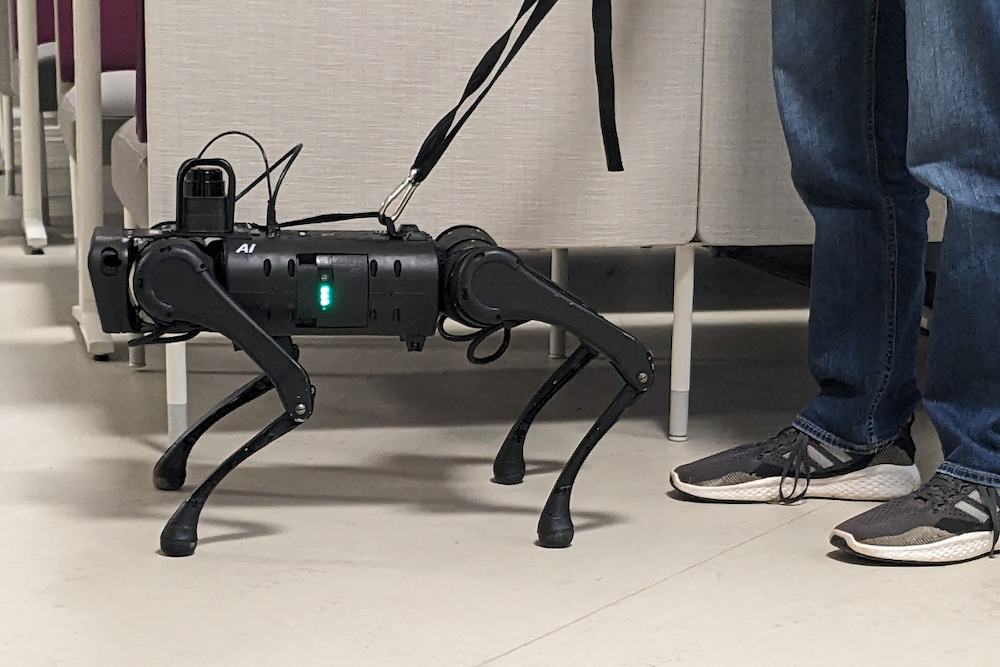
Computer scientists program robotic seeing-eye dog to guide the visually impaired
Engineers at Binghamton University, State University of New York have programmed a robot guide dog to assist the visually impaired. The robot responds to tugs on its leash.
A 130g soft robot gripper lifts 100kg?
Dr. Song, Kahye of the Intelligent Robotics Research Center at the Korea Advanced Institute of Science and Technology (KIST), along with Professor Lee, Dae-Young of the Department of Aerospace Engineering at the Korea Advanced Institute of Science and Technology (KAIST), have jointly developed a soft gripper with a woven structure that can grip objects weighing more than 100 kg with 130 grams of material.
These Robots Helped Understand How Insects Evolved Two Distinct Strategies of Flight
Robots built by engineers at the University of California San Diego helped achieve a major breakthrough in understanding how insect flight evolved, described in the Oct. 4, 2023 issue of the journal Nature. The study is a result of a six-year long collaboration between roboticists at UC San Diego and biophysicists at the Georgia Institute of Technology.
How Insects Evolved to Ultrafast Flight (And Back)
This asynchronous beating comes from how the flight muscles interact with the physics of the insect’s springy exoskeleton. This decoupling of neural commands and muscle contractions is common in only four distinct insect groups. For years, scientists assumed these four groups evolved these ultrafast wingbeats separately, but research from the Georgia Institute of Technology and the University of California, San Diego (UC San Diego) shows that they evolved from a single common ancestor. This discovery demonstrates evolution has repeatedly turned on and off this particular mode of flight. The researchers developed physics models and robotics to test how these transitions could occur.
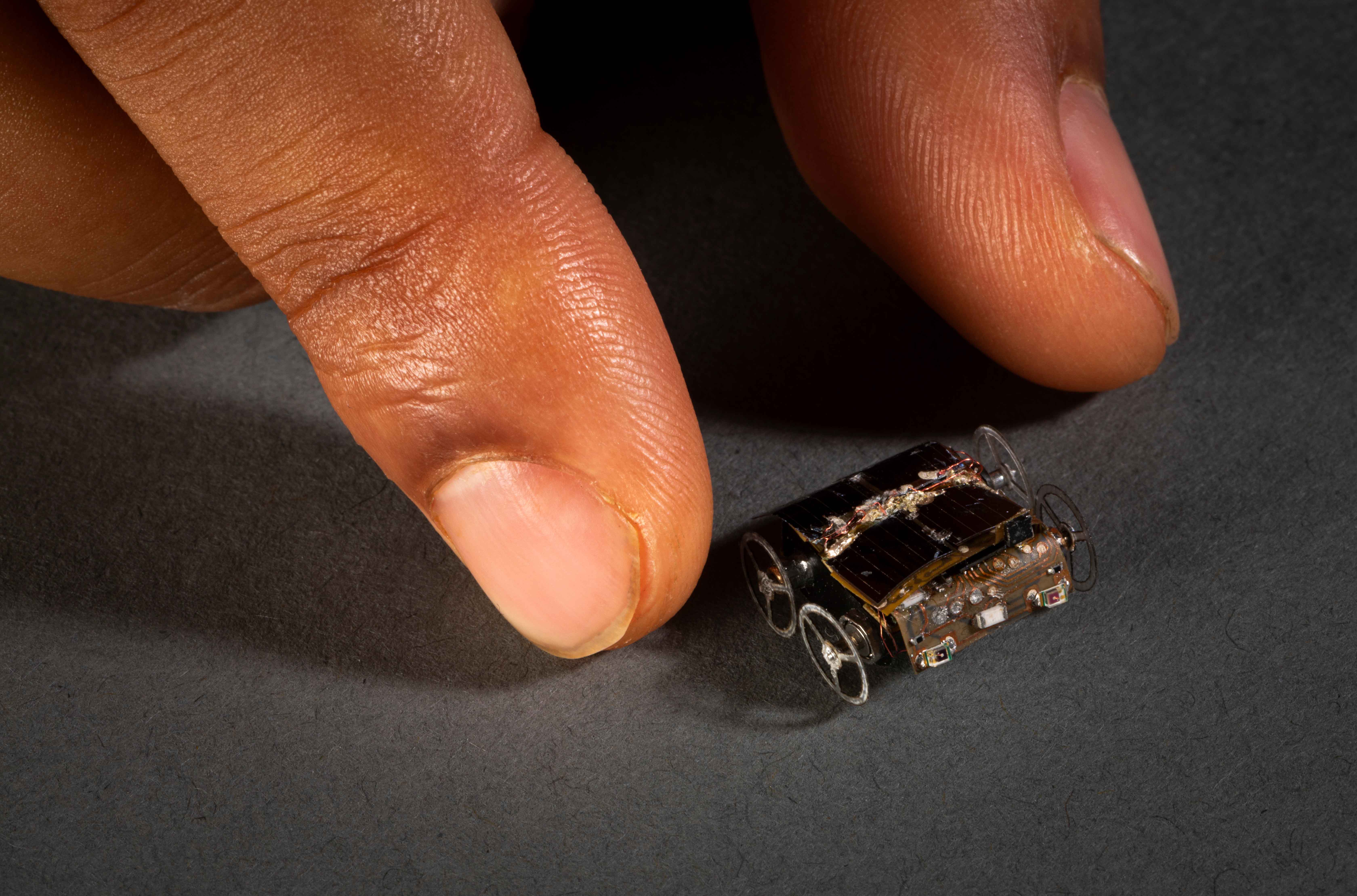
MilliMobile is a tiny, self-driving robot powered only by light and radio waves
The robot, equipped with a solar panel–like energy harvester and four wheels, is about the size of a penny, weighs as much as a raisin and can move about the length of a bus in an hour on a cloudy day.
Combustion powers bug-sized robots to leap, lift and race
Cornell researchers combined soft microactuators with high-energy-density chemical fuel to create an insect-scale quadrupedal robot that is powered by combustion and can outrace, outlift, outflex and outleap its electric-driven competitors.
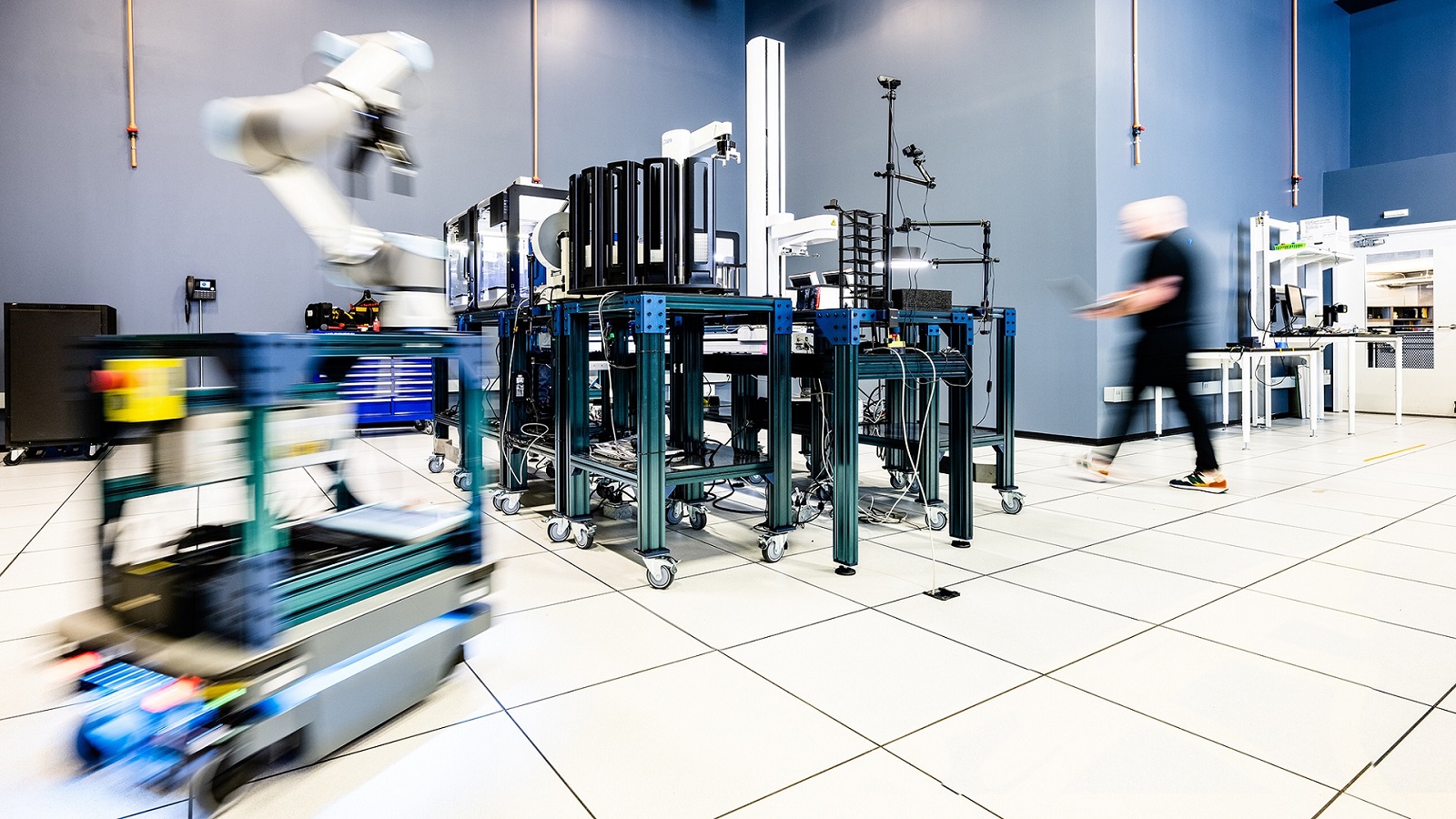
Autonomous discovery defines the next era of science
Argonne National Laboratory is reimagining the lab spaces and scientific careers of the future by harnessing the power of robotics, artificial intelligence and machine learning in the quest for new knowledge.
Meet the world’s 1st outdoor sweating, breathing and walking manikin
In the coming decades, every region in the U.S. is expected to experience higher temperatures and more intense heat waves. Thousands of people around the country die from heat-related illnesses each year, and in Maricopa County alone in 2022 there were 425 heat-related fatalities, a 25% increase from the previous year. ASU researchers aim to better understand heat stress on the human body and what makes hot weather so deadly using ANDI the world’s 1st outdoor sweating, breathing and walking manikin.
How robots could help verify compliance with nuclear arms agreements
Ensuring that countries abide by future nuclear arms agreements will be a vital task. Now, PPPL researchers have helped devise an automated way to ensure compliance.
Swarming microrobots self-organize into diverse patterns
A research collaboration between Cornell and the Max Planck Institute for Intelligent Systems has found an efficient way to expand the collective behavior of swarming microrobots: Mixing different sizes of the micron-scale ‘bots enables them to self-organize into diverse patterns that can be manipulated when a magnetic field is applied. The technique even allows the swarm to “cage” passive objects and then expel them.
University of Rhode Island, Flinders University (Australia) formalize partnership in support of AUKUS Agreement
The University of Rhode Island has formalized a research and education partnership with Australia’s Flinders University that advances AUKUS, a security partnership signed by the governments of the United States, Australia, and the United Kingdom. URI’s agreement with Flinders will bolster Australia’s efforts to produce the skilled workforce it needs to deliver on the AUKUS security pact, which includes a phased approach to build Australia’s undersea capability through the acquisition of conventionally armed, nuclear-powered submarines.
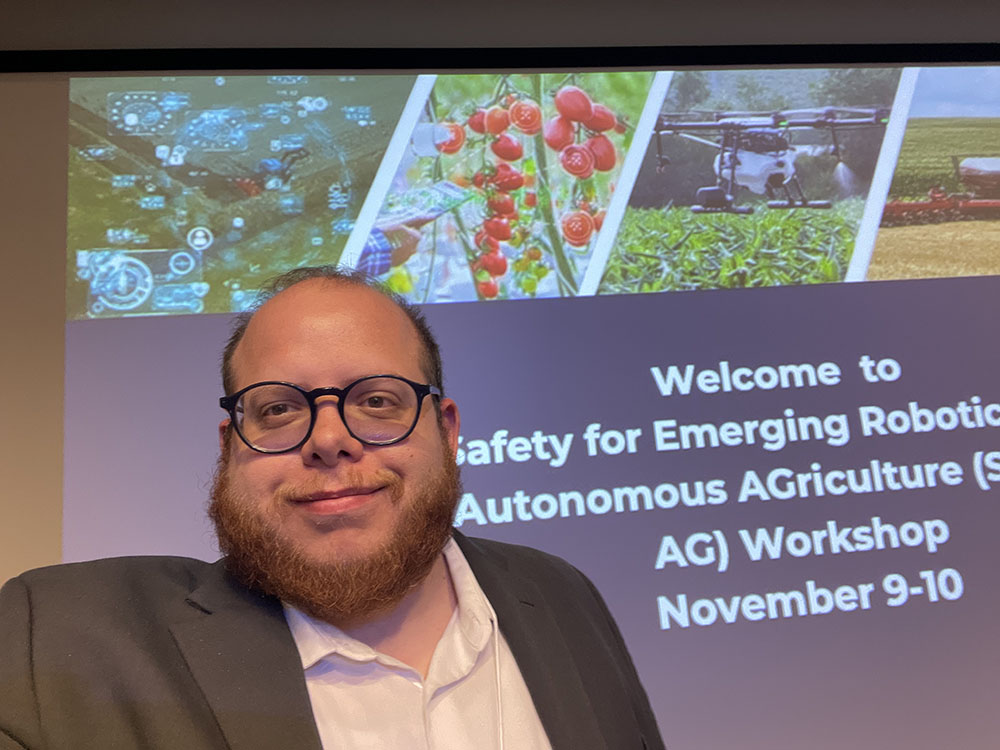
Automated agricultural machinery requires new approaches to ensuring safety
From self-driving tractors to weeding robots and AI-powered data collection, automated machinery is revolutionizing agricultural production. While these technological advancements can greatly improve productivity, they also raise new questions about safety measures and regulations. To address these issues, a recent study from the University of Illinois reviewed current academic literature on the safety of automated agricultural machines. Based on a review of more than 60 papers, the researchers identified three main topics: environmental perception, risk assessment and mitigation, and human factors and ergonomics.
Scurrying Centipedes Inspire Many-Legged Robots That Can Traverse Difficult Landscapes
Intrigued to see if the many limbs could be helpful for locomotion in this world, a team of physicists, engineers, and mathematicians at the Georgia Institute of Technology are using this style of movement to their advantage. They developed a new theory of multilegged locomotion and created many-legged robotic models, discovering the robot with redundant legs could move across uneven surfaces without any additional sensing or control technology as the theory predicted.
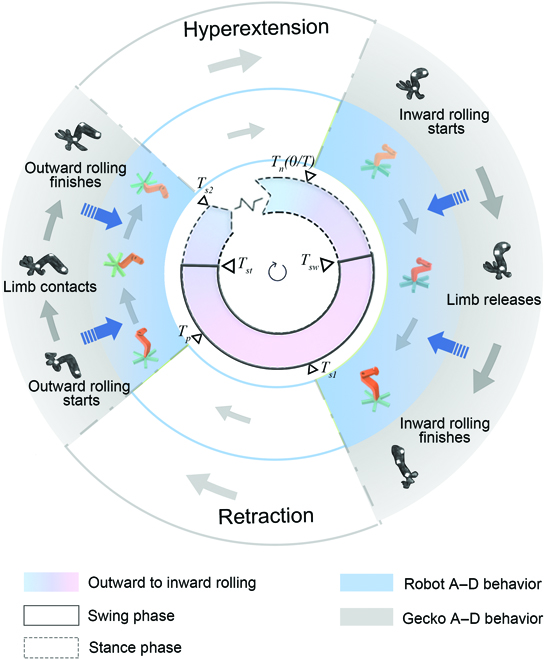
A neural coordination strategy for attachment and detachment of a climbing robot inspired by gecko locomotion
A research article by scientists at the Nanjing University of Aeronautics and Astronautics developed a neural control algorithm to coordinate the adhesive toes and limbs of the climbing robot.
The World of Robots
Follow the career journeys of CSU alumni working in the robotics field.
Internships help students create prototypes for career success
Argonne’s Rapid Prototyping Laboratory is a testing ground for new ideas and new careers in autonomous discovery. Undergraduate and graduate student interns are learning how to automate lab work using robotics and artificial intelligence.
What Physicists Can Learn from Shark Intestines
ROCKVILLE, MD – In 1920, inventor Nikola Tesla patented a type of pipe that he called a “valvular conduit,” which was built to draw fluid in one direction without any moving parts or added energy, and has applications ranging from soft robotics to medical implants. In 2021, scientists discovered that sharks’ spiral-shaped intestines work much the same way, favoring fluid flow in one direction—from head to pelvis.

“Build Your Own Masters” at NYU Tandon
An innovative engineering master’s program unveiled today by Digital Learning at NYU Tandon gives students flexibility to tailor their degree to their unique professional interests and aspirations. Students will have the opportunity to enroll in one of nine interdisciplinary concentrations – including in-demand fields like robotics, cybersecurity, and data science – all offered fully online.
Legged robots need more testing before real-world use
When it comes to the evolution of mobile robots, it may be a long time before legged robots are able to safely interact in the real world, according to a new study.
New soft robots poised to be more agile, controlled
One of the virtues of untethered soft robots is their ability to mechanically adapt to their surroundings and tasks. Now they are poised to become even more agile and controlled.
Robot-assisted therapy for stroke patients
University of Delaware researchers will use a $1.2 million National Institutes of Health grant to improve post-stroke rehabilitation using robotic exoskeleton devices and advanced modeling techniques to develop patient-specific exercises and interventions.
Designing better battery electrolytes
Argonne scientists give the lay of the land in the quest for electrolytes that could enable revolutionary battery chemistries.
Argonne seeks STEM interns to help design the future of science
The U.S. Department of Energy’s Argonne National Laboratory seeks undergraduate and graduate students for a summer 2023 internship in robotics and instrumentation. Students will explore using robotics, artificial intelligence and machine learning.
Flying Snakes Help Scientists Design New Robots
In Physics of Fluids, researchers explore the lift production mechanism of flying snakes, which undulate side-to-side as they move from the tops of trees to the ground to escape predators or to move around quickly and efficiently. The investigators developed a computational model derived from data obtained through high-speed video of the snakes and considered several features, such as the angle of attack that the snake forms with the oncoming airflow and the frequency of its undulations, to determine which were important in producing glide.
Newer Cementless Knee Replacements Could Last Longer
Cementless knee replacements are a newer option for younger patients that allows bone to grow directly into the implant and avoids cement fixation. While cemented knee replacements work well, the cement may loosen from the bone or the prosthesis over time which can result in the need for a revision knee surgery. The combination of robotic assisted knee replacement surgery with cemented implants may provide the greatest longevity.
Space exploration goes underground
In two connected studies, cave ecologist Jut Wynne, along with dozens of co-authors including engineers, astrophysicists, astrobiologists and astronauts, lay out the research that needs to be done to get us closer to answering the old-age question about life beyond Earth.
S&T researchers’ study of human-robot interactions an early step in creating future robot “guides”
A new study by Missouri S&T researchers shows how human subjects, walking hand-in-hand with a robot guide, stiffen or relax their arms at different times during the walk. The researchers’ analysis of these movements could aid in the design of smarter, more humanlike robot guides and assistants.“This work presents the first measurement and analysis of human arm stiffness during overground physical interaction between a robot leader and a human follower,” the Missouri S&T researchers write in a paper recently published in the Nature journal Scientific Reports.
Robots are taking over jobs, but not at the rate you might think
It’s easy to believe that robots are stealing jobs from human workers and drastically disrupting the labor market; after all, you’ve likely heard that chatbots make more efficient customer service representatives and that computer programs are tracking and moving packages without the use of human hands.
Using Vibrations to Control a Swarm of Tiny Robots
Despite their potential, microrobots’ size often means they have limited sensing, communication, motility, and computation abilities, but new research from the Georgia Institute of Technology enhances their ability to collaborate efficiently. The work offers a new system to control swarms of 300 3-millimeter microbristle robots’ (microbots) ability to aggregate and disperse controllably without onboard sensing.
Scared of Injections? Try a Wearable Soft Robot to Ease Aversion to Needles
While most of us are never without our smartphones, robots may also soon become indispensable companions.
New algorithms help four-legged robots run in the wild
A new system of algorithms developed by UC San Diego engineers enables four-legged robots to walk and run on challenging terrain while avoiding both static and moving obstacles. The work brings researchers a step closer to building robots that can perform search and rescue missions or collect information in places that are too dangerous or difficult for humans.
Active Matter, Curved Spaces: Mini Robots Learn to ‘Swim’ on Stretchy Surfaces
Physicists are using small wheeled robots to better understand indirect mechanical interactions, how they play a role in active matter, and how we can control them. Their findings, “Robotic swimming in curved space via geometric phase” are recently published in the The Proceedings of the National Academy of Sciences (PNAS).
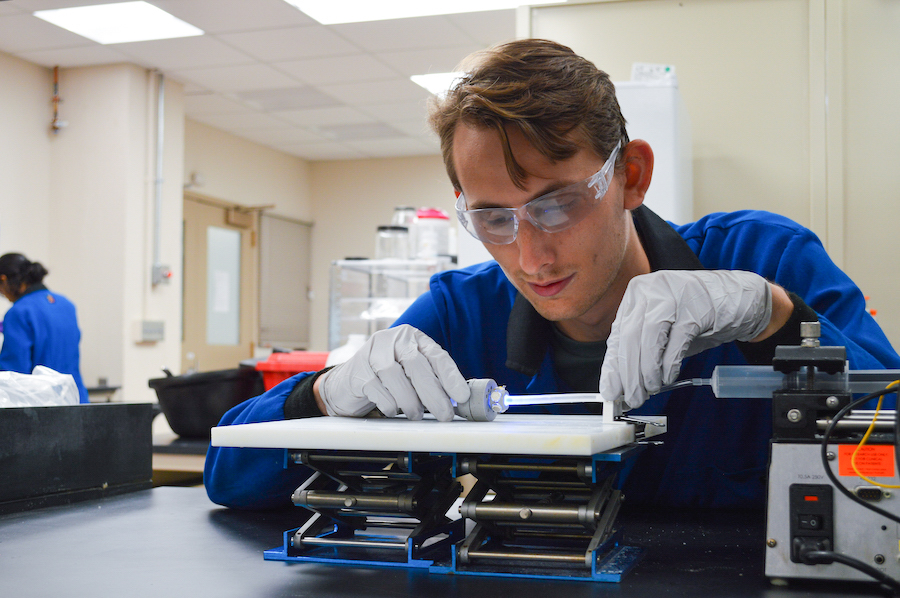
Engineers discover new process for synthetic material growth, enabling soft robots that grow like plants
An interdisciplinary team of University of Minnesota Twin Cities researchers has developed a new, plant-inspired extrusion process that enables synthetic material growth, and the creation of a soft robot that builds its own solid body from liquid to navigate hard-to-reach places and complicated terrain.
The physics of walking is simpler than we thought
The physics of walking for multi-legged animals and robots is simpler than previously thought. That is the finding described by a team of roboticists, physicists and biologists in the Sept. 5 issue of the Proceedings of the National Academy of Sciences, in a paper titled “Walking is like slithering: a unifying, data-driven view of locomotion.”